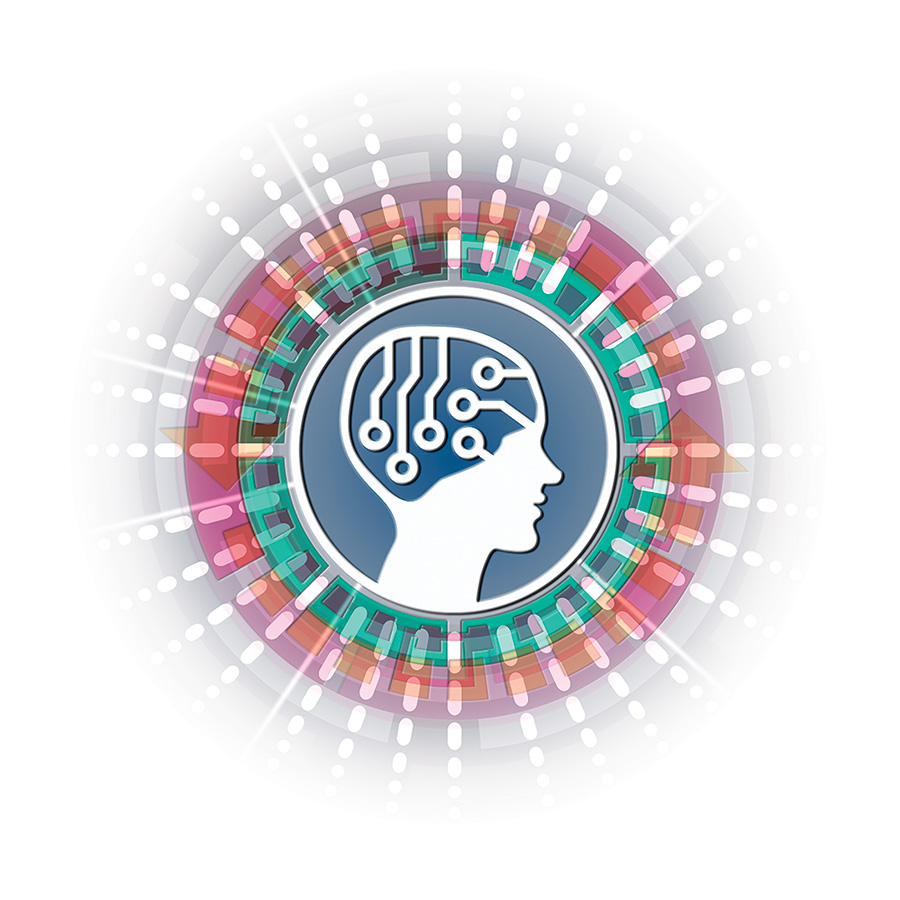ersonal drones to pick up groceries and cleaning supplies, apps that help the elderly navigate public transportation, and robots that deliver food and social interaction to underserved populations. What would have seemed like luxuries prior to 2020 now look like valuable solutions during a global health crisis.
That's just part of the objective of a group of UNT researchers who are using their combined expertise to advance a broad integration of intelligent mobility systems spanning freight, people, airways and roadways, above ground and below ground -- and use them to solve challenging and pressing problems facing our transport world today. UNT has strong research and development programs in air and ground autonomous vehicles, supply chain logistics and artificial intelligence, and ongoing partnerships with industry and public organizations. A new Center for Integrated Intelligent Mobility Systems (CIIMS) launched this year to capitalize on the interdisciplinary research of UNT faculty in areas including business, engineering, science, information and health and public service.
"The whole concept of mobility we're tackling is very broad and encompassing," says Terry Pohlen, associate dean of the G. Brint Ryan College of Business, director of UNT's Jim McNatt Institute of Logistics and co-director of CIIMS. "It ranges from personal mobility to supply chains and the movement of freight."

Technology to automate the movement of goods, services and people is progressing rapidly, but an integrated approach is a must for successful deployment in safe, affordable, accessible and resilient ways.
"It's not just about the smart transportation, it's about the integrated structure of this mobility," Simon Andrew, professor of public administration, says.
Andrew, together with others in the College of Health and Public Service and the College of Engineering, have been exploring intelligent mobility systems for some time, with grants from NASA, the Office of Naval Research, the Army Research Lab and the National Science Foundation. UNT's unique approach to air-to-ground vehicle integration uses modern tools like meshed networks, data sharing, machine learning and artificial intelligence integrated into 3D intelligent mobility systems. Kamesh Namuduri, professor of electrical engineering, collaborated with Andrew using networked drones to enable emergency communications during disaster recovery.
"It's critical for local governments to be aware of different technologies and how they can be implemented in terms of policy development and adoption," Andrew says.
Namuduri also is part of NASA's Advanced Air Mobility National Campaign, which works to address the drastic increase of low-flying traffic over U.S. cities expected during the next decade by sharing airspace hazards data from multiple sources.
And with a focus on improving unmanned aircraft in the military, materials science and engineering researchers Diana Berman, Samir Aouadi and co-director of CIIMS Andrey Voevodin have been working on solutions to improve drone engines. They are using tribology -- the study of friction -- to develop more efficient and durable unmanned aerial vehicles.
A Texas-based partnership center, CIIMS will bridge these research breakthroughs in intelligent technologies and workforce preparation.
Computer science and engineering researchers Qing Yang and Song Fu have partnered for connected and autonomous vehicle research to link all autonomous cars via wireless communication techniques, creating a network through which the vehicles can get a better sense of their surroundings. They also are working to address a shortage of engineers trained in autonomous vehicle technology. Graduate, undergraduate and TAMS students consistently assist them in the research and many have landed internships with companies like Fujitsu America and Nokia Bell Labs. The duo also hosted a 10-week summer camp in 2019 for underrepresented populations in the computer science industry to learn about autonomous vehicles.
Additionally, a demonstration laboratory for autonomous vehicles has been established at UNT's Discovery Park -- a joint project between the College of Engineering and the G. Brint Ryan College of Business. Initial projects include ground-to-air drone tracking and interactions between robots and IoT infrastructure in smart building environments. And new collaborations continue to percolate, such as researchers in the G. Brint Ryan College of Business addressing supply chains for COVID-19 reagents and vaccines, and an interdisciplinary group led by Lauren Ames Fischer in the College of Health and Public Service, that is working to help the elderly, disabled and those with limited English use public transportation.
Autonomous vehicles have the potential to improve the lives of many, but many still question their safety. Researchers at the Jim McNatt Institute for Logistics Research believe that their field-tested technologies in freight logistics will provide a necessary confidence level to transport through intelligent mobility systems.
"I envision an autonomous truck backing up to a warehouse and unloaded by robots," Pohlen says. "Another set of robots will pick up the goods, with humans doing value-added activities, and then another loads them into an autonomous truck or drones will pick up the goods and deliver them to your home. It's possible. It's just how do we put it all together?"
Part of the answer, Voevodin says, is collaborations with public and community organizations. And UNT's expertise and DFW-area industry connections position it at the forefront of the development of intelligent mobility systems that can solve those problems and more. These are big, bold goals -- but their success is critical, particularly as the global pandemic has placed an unprecedented emphasis on quick solutions, such as the large-scale distribution of vaccines and medical supplies. There is an increased demand for contact-free delivery, along with demonstrated weaknesses in supply chains, taking the potential advantages of automated delivery systems like autonomous vehicles and drones way beyond novelty and simple convenience.
"When we develop the tools, business models and technologies into a cohesive focus, and when we help our industry partners, all of this is for one purpose," Voevodin says. "To improve the quality of life for citizens and communities in Texas and beyond."


